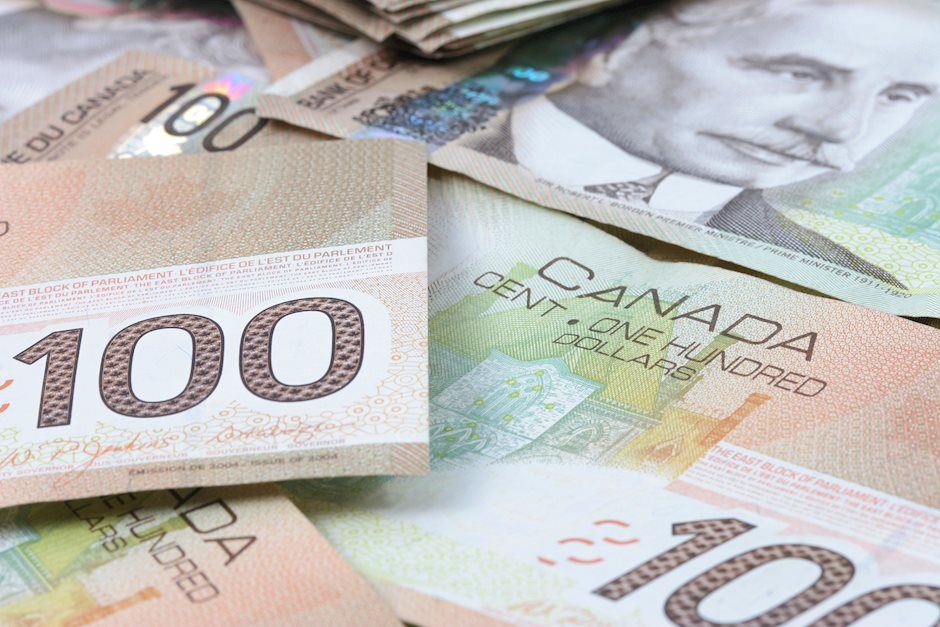USD/CAD rises above 1.3900 amid lower Oil prices, potential Trump’s tariffs
- USD/CAD appreciates as Trump’s proposed fiscal policies could heighten inflation risks, prompting the Fed to adopt hawkish stance.
- Michigan Consumer Sentiment Index rose to 73.0 in November, exceeding 70.5 prior and expected 71.0 readings.
- The commodity-linked Canadian Dollar faces challenges due to lower crude Oil prices.

USD/CAD seems to extend its gains as US Dollar (USD) appreciates as traders anticipate a less dovish stance from the Federal Reserve (Fed), as Donald Trump is likely to pursue his campaign promises to enact substantial tariffs, including a 10% increase on imports and a reduction in corporate taxes. The USD/CAD pair trades around 1.3920 during the Asian session on Monday.
Trump’s fiscal policies could lead to higher investment, spending, and labor demand, elevating inflation risks. This could prompt the Fed to adopt a more restrictive monetary policy. However, Fed Chair Jerome Powell stated on Thursday that he doesn’t anticipate Trump’s potential return to the White House impacting the Fed’s near-term policy decisions.
On Friday, the preliminary University of Michigan Consumer Sentiment Index rose to 73.0 in November, up from 70.5 in October and exceeding the market’s expectation of 71.0. This upbeat data has broadly strengthened the Greenback.
The upside of the USD/CAD pair could also be supported by the weaker commodity-linked Canadian Dollar (CAD), which could be attributed to lower crude Oil prices, given the fact that Canada is the largest Oil exporter to the United States (US).
West Texas Intermediate (WTI) Oil price continues to decline for the second consecutive day, trading around $69.90 per barrel during the Asian hours on Monday. The drop in crude Oil prices comes as China's latest stimulus measures disappointed investors. Additionally, Oil prices have eased after eased concerns over potential supply disruptions from Storm Rafael in the US Gulf of Mexico.
Canadian Dollar FAQs
The key factors driving the Canadian Dollar (CAD) are the level of interest rates set by the Bank of Canada (BoC), the price of Oil, Canada’s largest export, the health of its economy, inflation and the Trade Balance, which is the difference between the value of Canada’s exports versus its imports. Other factors include market sentiment – whether investors are taking on more risky assets (risk-on) or seeking safe-havens (risk-off) – with risk-on being CAD-positive. As its largest trading partner, the health of the US economy is also a key factor influencing the Canadian Dollar.
The Bank of Canada (BoC) has a significant influence on the Canadian Dollar by setting the level of interest rates that banks can lend to one another. This influences the level of interest rates for everyone. The main goal of the BoC is to maintain inflation at 1-3% by adjusting interest rates up or down. Relatively higher interest rates tend to be positive for the CAD. The Bank of Canada can also use quantitative easing and tightening to influence credit conditions, with the former CAD-negative and the latter CAD-positive.
The price of Oil is a key factor impacting the value of the Canadian Dollar. Petroleum is Canada’s biggest export, so Oil price tends to have an immediate impact on the CAD value. Generally, if Oil price rises CAD also goes up, as aggregate demand for the currency increases. The opposite is the case if the price of Oil falls. Higher Oil prices also tend to result in a greater likelihood of a positive Trade Balance, which is also supportive of the CAD.
While inflation had always traditionally been thought of as a negative factor for a currency since it lowers the value of money, the opposite has actually been the case in modern times with the relaxation of cross-border capital controls. Higher inflation tends to lead central banks to put up interest rates which attracts more capital inflows from global investors seeking a lucrative place to keep their money. This increases demand for the local currency, which in Canada’s case is the Canadian Dollar.
Macroeconomic data releases gauge the health of the economy and can have an impact on the Canadian Dollar. Indicators such as GDP, Manufacturing and Services PMIs, employment, and consumer sentiment surveys can all influence the direction of the CAD. A strong economy is good for the Canadian Dollar. Not only does it attract more foreign investment but it may encourage the Bank of Canada to put up interest rates, leading to a stronger currency. If economic data is weak, however, the CAD is likely to fall.
Author

Akhtar Faruqui
FXStreet
Akhtar Faruqui is a Forex Analyst based in New Delhi, India. With a keen eye for market trends and a passion for dissecting complex financial dynamics, he is dedicated to delivering accurate and insightful Forex news and analysis.

















